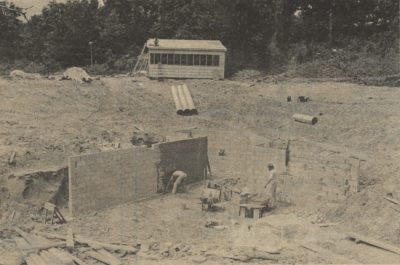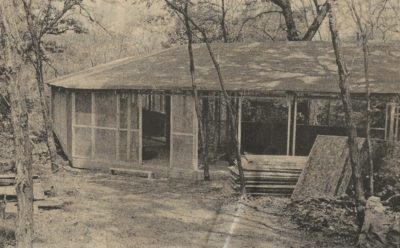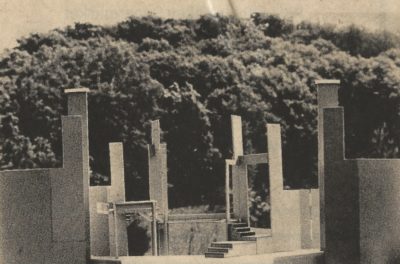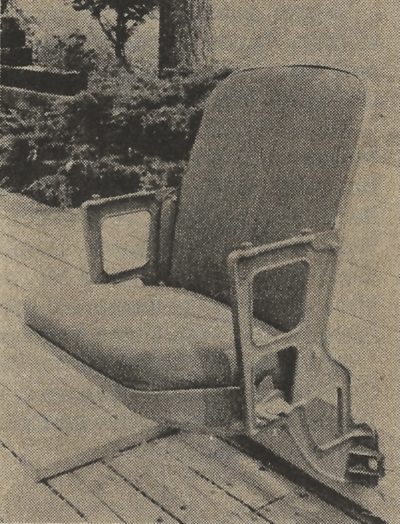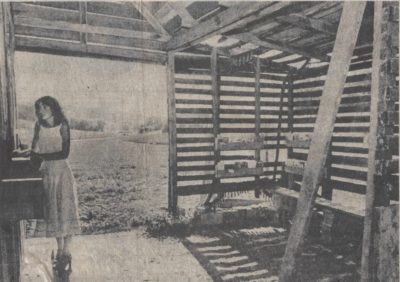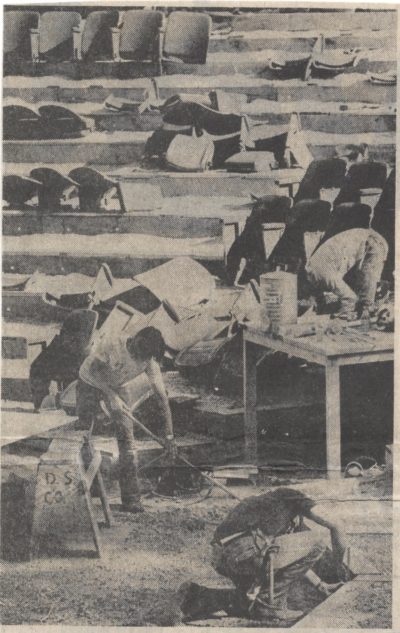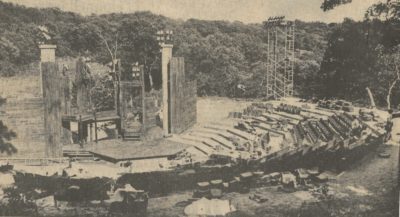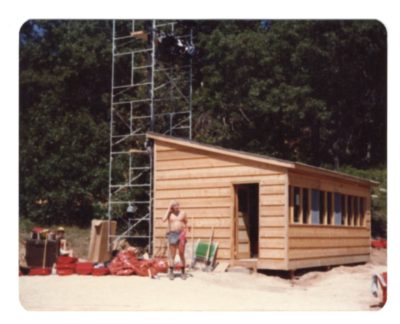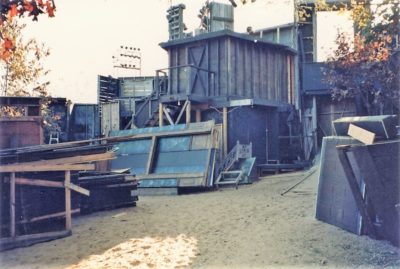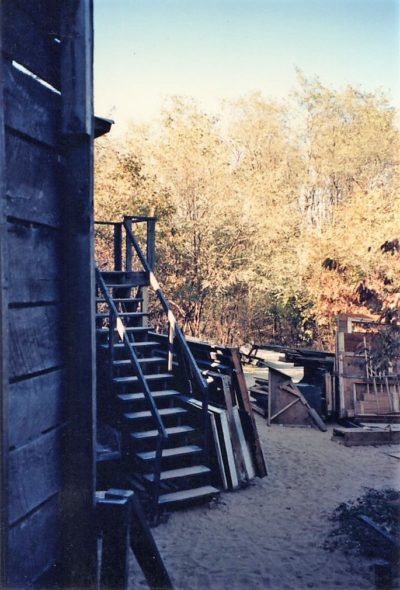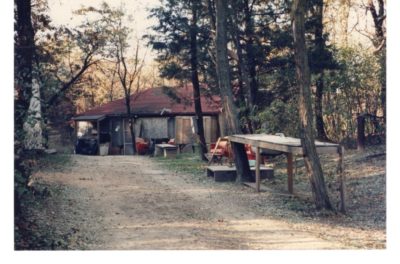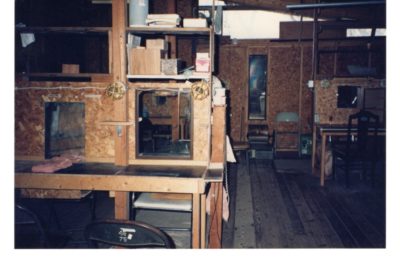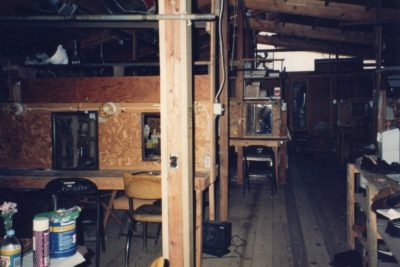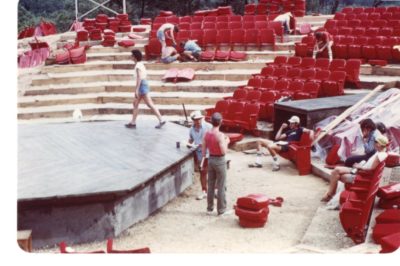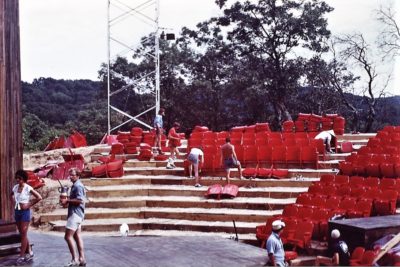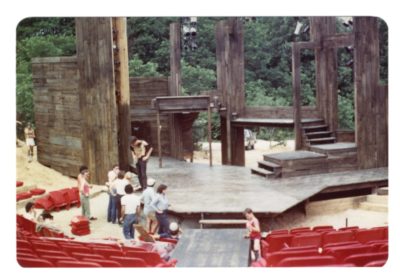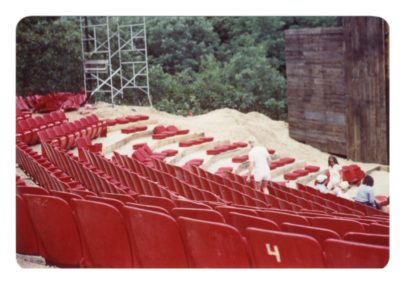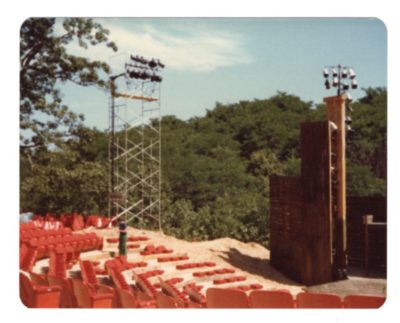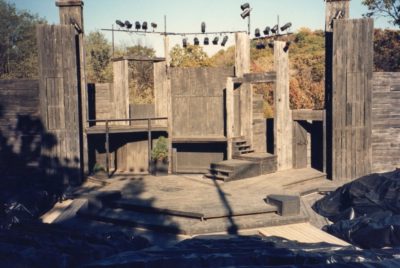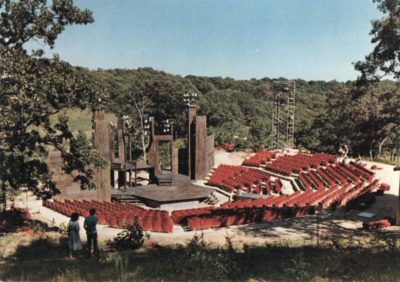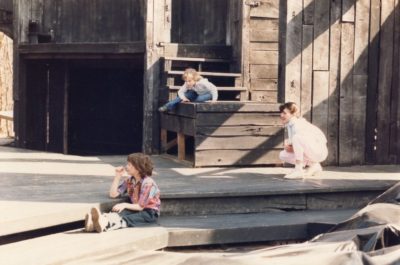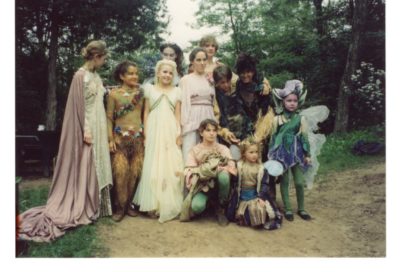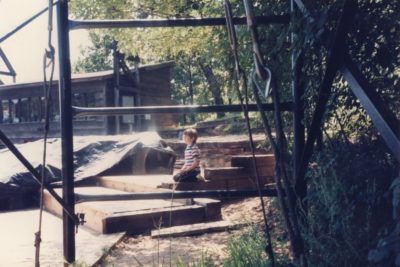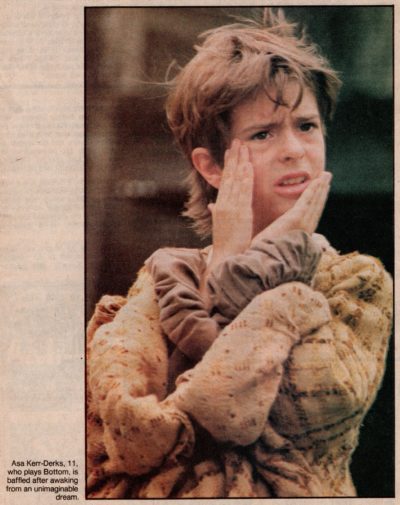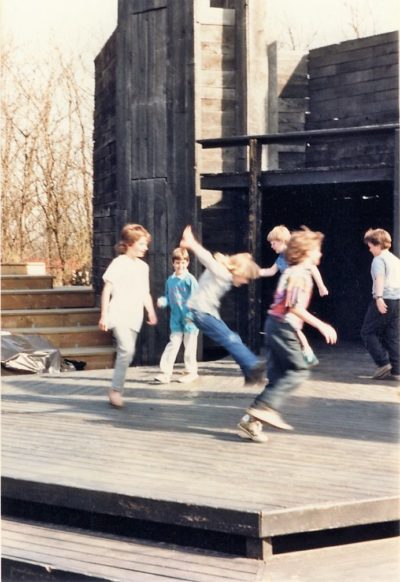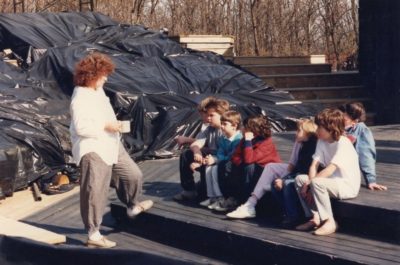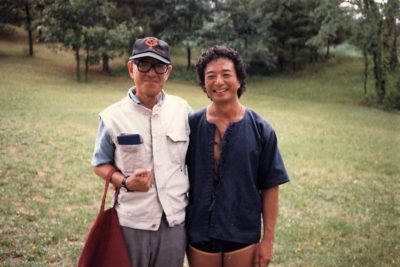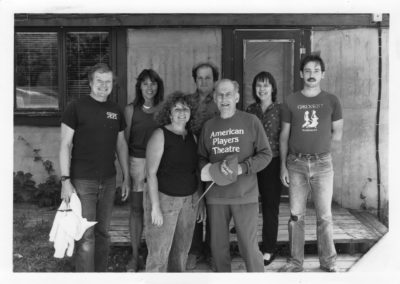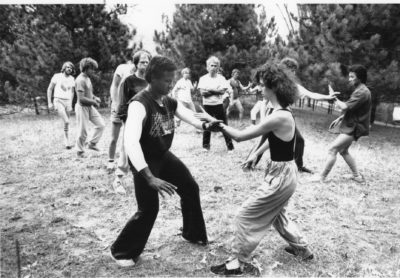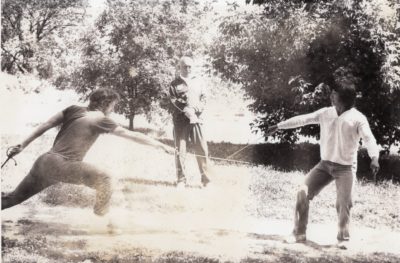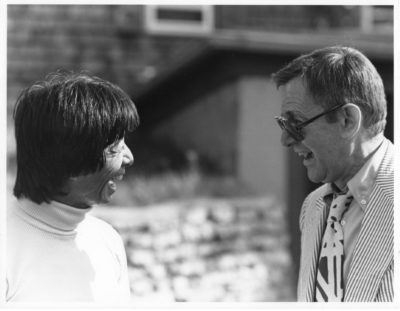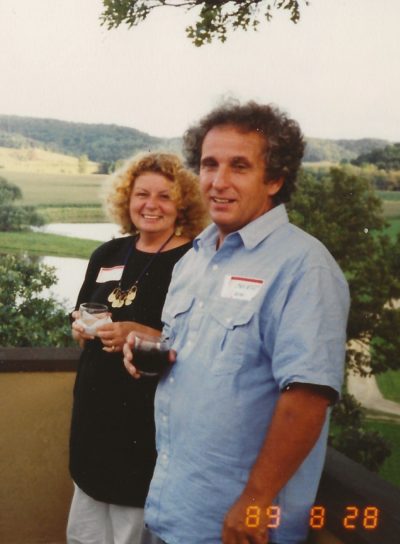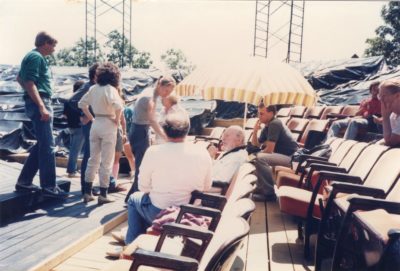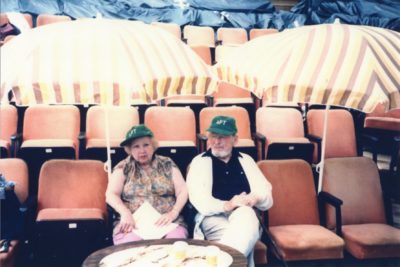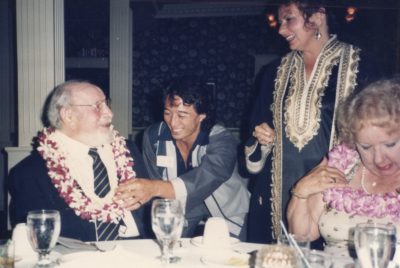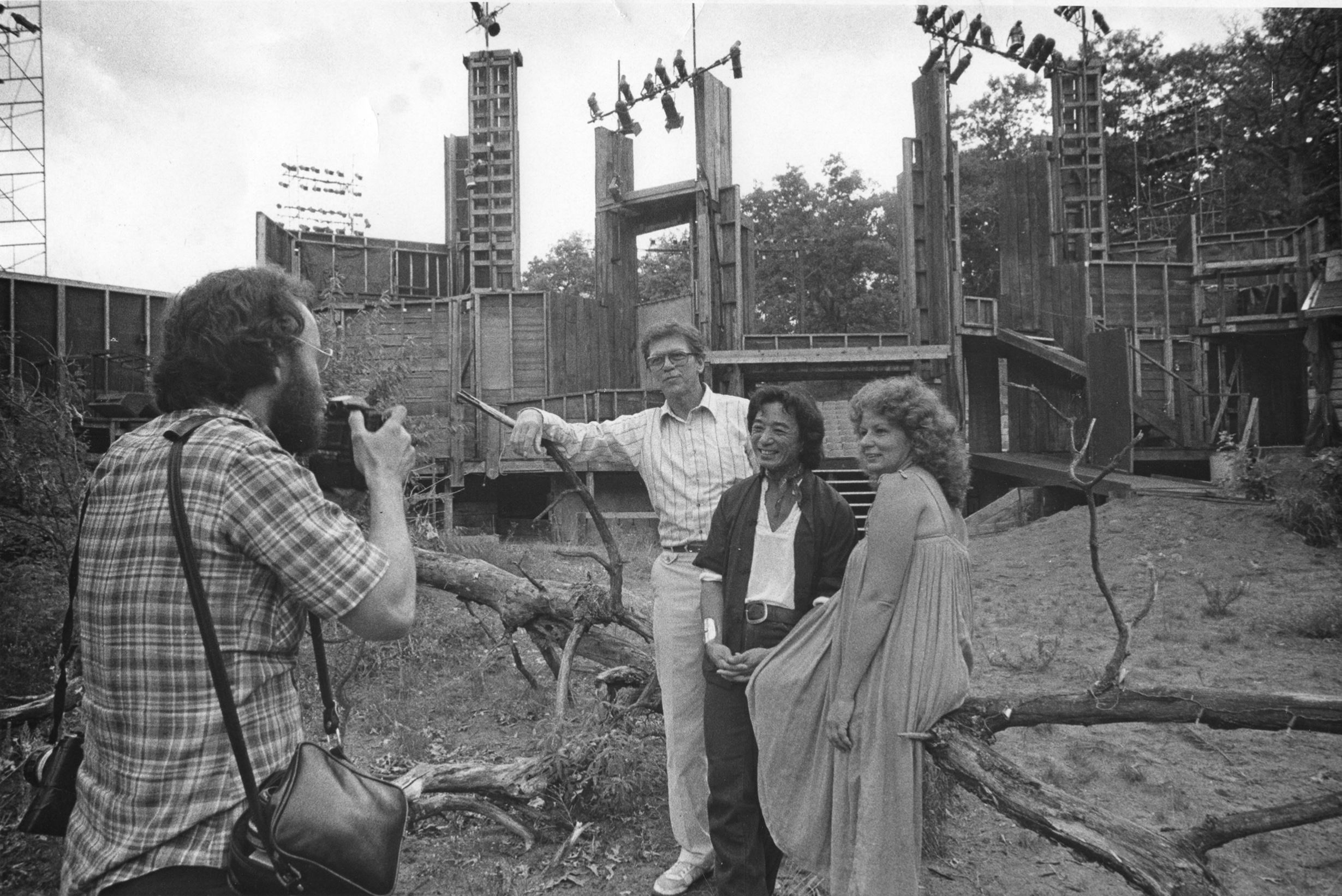
Charles Bright, Anne Occhiogrosso, and I had a very big dream: to found and build an American, classical repertory company producing plays within the framework of a classical theatre research and training center. We incorporated in Washington D.C. in 1977, and in 1980 planted ourselves in Spring Green, WI. With high hopes and limited funds, we dove into realizing our dream…
“People start theater companies every day, don’t they?” – Charles J. Bright, Managing Director, American Players Theatre 1971-1988
THE SITE
THE THEATRE
“A hike up a winding gravel path lined with foot lamps, across gliding dips of meadowland, will lead you to the theater…Hiking upward your spirit has time to adjust to the paradox that awaits you—classic culture at home in the wilderness. And finally, there it is, raised on raw boards, an austere little stage at the pit of an amphitheater.” – Jim Dalglish, CITY LIGHTS 1981
THE RESEARCH
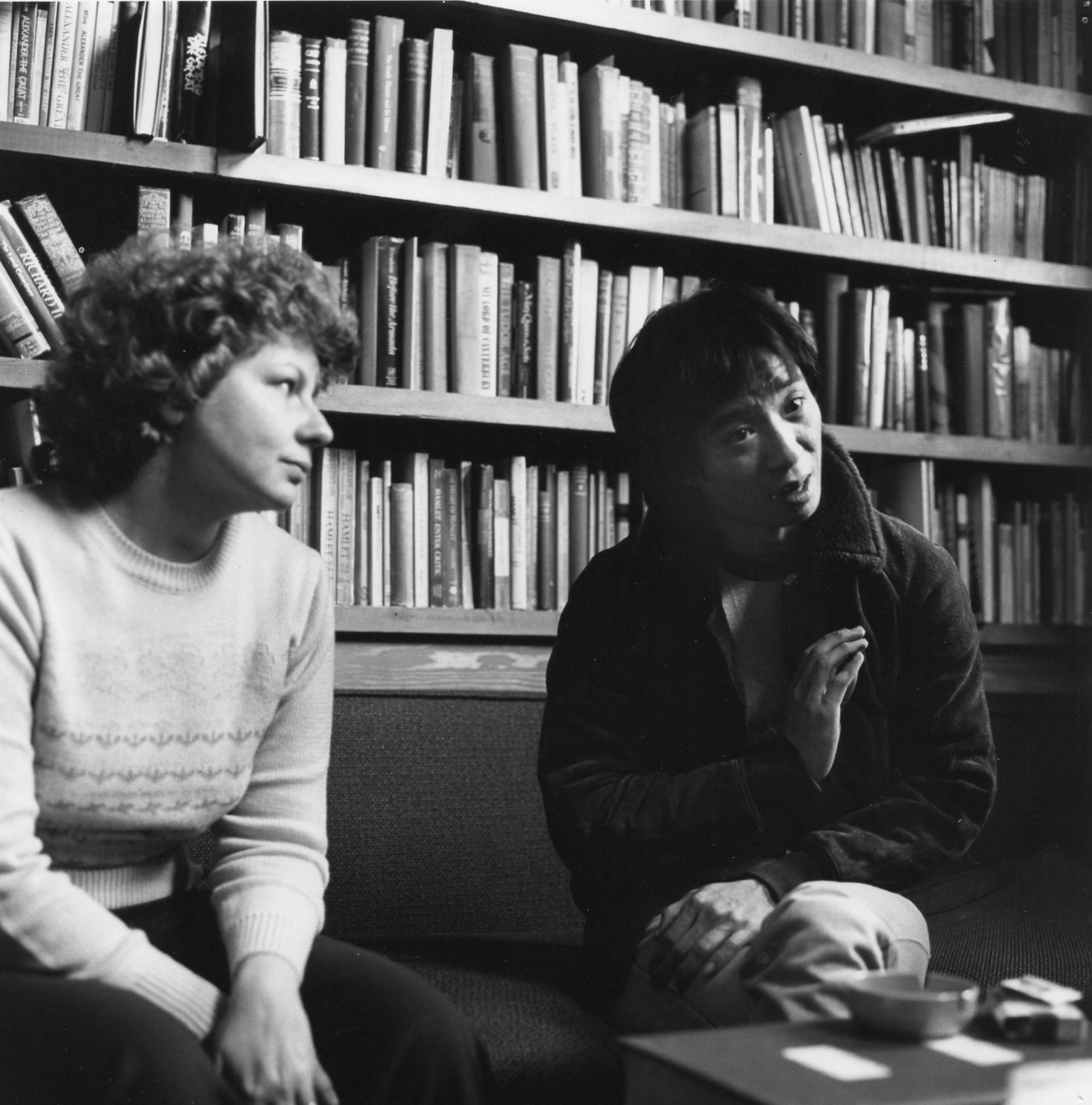
We wanted to study a text thoroughly and deeply. Our library, consisting of 3,000 books was made available to all that worked at APT. The company studied sources of Shakespeare’s texts and looked up the definition of each word they were to speak. Other resources were available to inform as well as stimulate the company’s imagination. This diligent work shared by actors, directors, designers, and office personnel—THE ENTIRE COMPANY, was in an effort to represent the plays with a specialized knowledge that would make the audience’s experience richer.
THE TRAINING
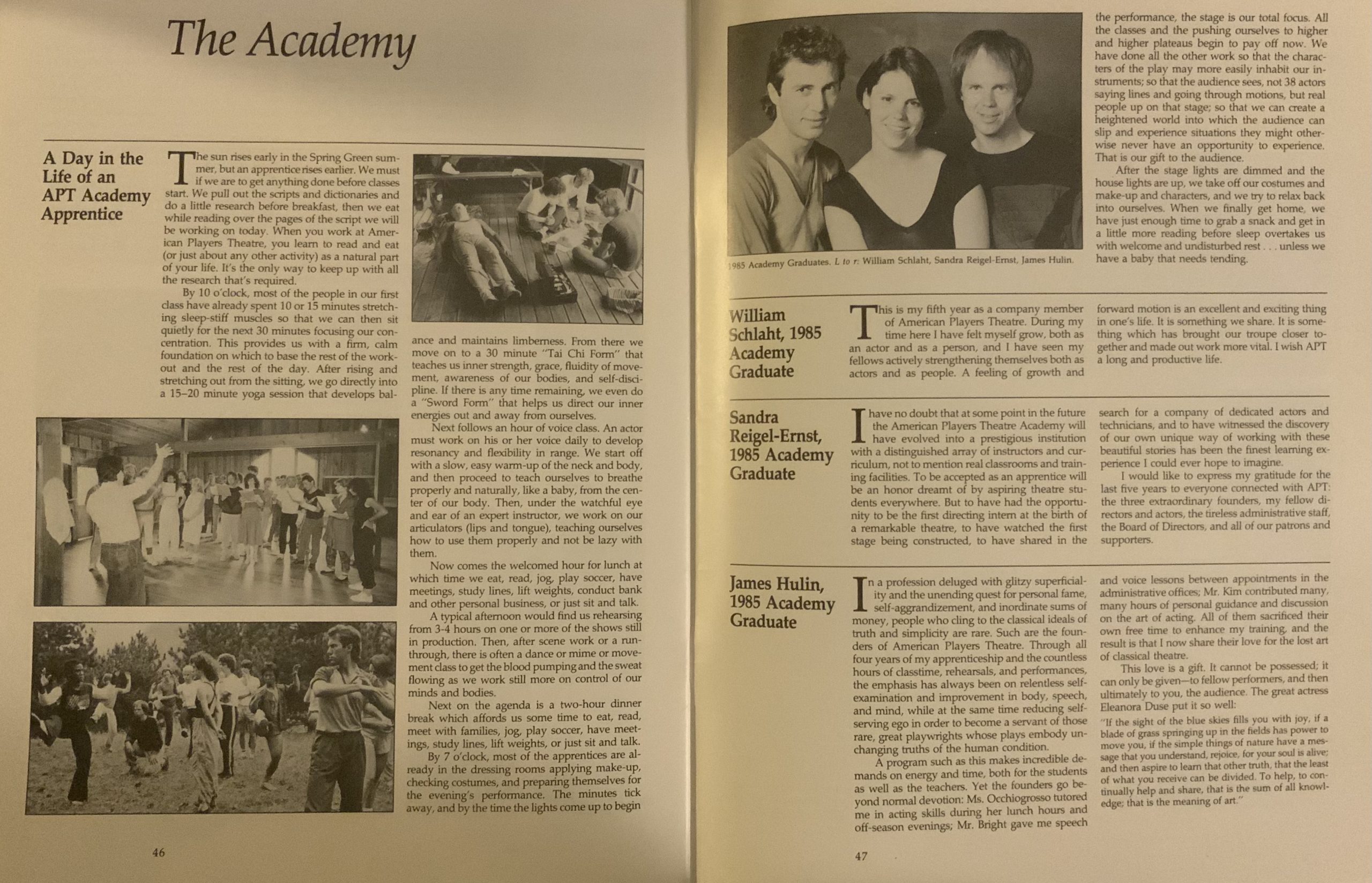
An article in the 1985 APT souvenir program.
Here is a clip of a video made to showcase the training at APT: shorturl.at/vNU45
THE PEOPLE
What would our theater have been without the children? They reminded us every day why we were creating this theater. Recently, one of them, Asa Kerr-Derks, now 40, told us APT was their playground when they were growing up. I guess it was ours too, but they look like they were having much more fun. The did their own production of A MIDSUMMER NIGHT’S DREAM, insisting it be performed uncut and joined us for AN ENEMY OF THE PEOPLE in our last season.
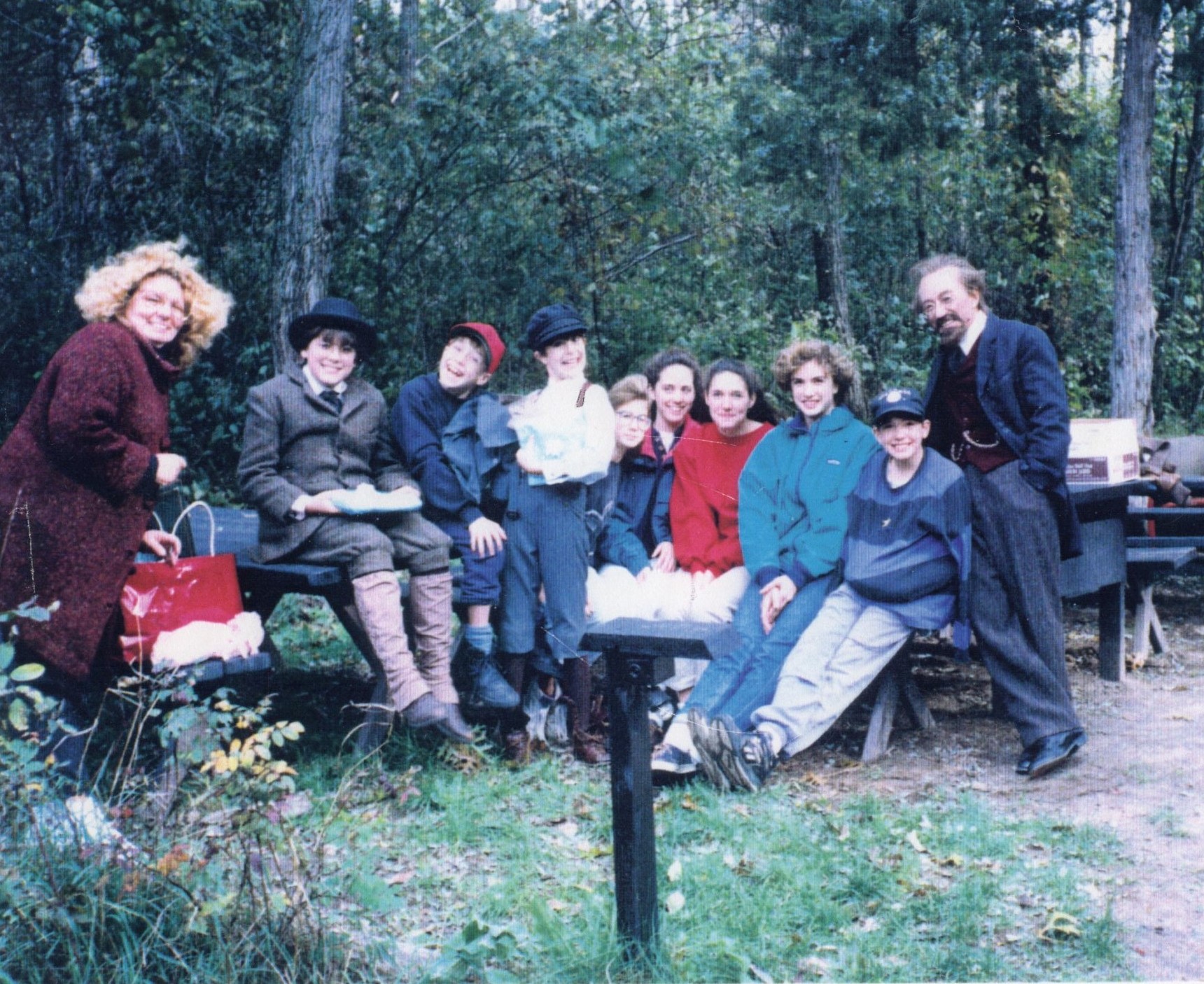
In developing our Academy we knew we needed help in training our apprentices and found some of the best. Command of one’s body was paramount for a classical repertory, with the demand of performing out-of-doors, doing several shows in the course of a week, and creating an array of different characters. Because my own acting was so influenced by Asian theater and because of advice given to us by A.C. Scott (a foremost authority on Asian theatre), I felt we needed someone who could teach us Tai Chi and Meditation to strengthen our bodies and minds. We needed to be flexible and fluid in our movement as well. Jerry Gardner was the man. Not only was he a Martial Arts teacher and Kung-Fu competitor, but he was, also, totally schooled in Ballet and Pilates. His impact on my work and thinking remain to this day.
Since I brought up Asian Theater, I must mention Onoe Kuroemon II, a member of a legendary Kabuki family. I had worked with him in Hawaii in 1963, and when our male actors needed to fill the ranks of the girls at Capulet’s Feast (we just had too few women) I thought Onoe could possibly help us with this dilemma.
Because we were to expand our rep with plays written in different languages we wanted to have our own translations of those works. Fortunately for us John A. Wyatt, Professor of Classics, was teaching nearby in Beloit, Wisconsin and knew the roots of so many languages that there wasn’t a playwright he could not translate. He became a very close friend and we were dependent on his translations of OEDIPUS, COMEDY OF ASSES, 6 Chekhov ONE-ACTS, THE SEAGULL, IVANOV and THE SERVANT OF TWO MASTERS.
Patrick (Paddy) Crean, the renowned theatrical fight director, joined us for a season. He had choreographed the Hamlet duel at the Guthrie, so when we scheduled Hamlet at APT I jumped at the opportunity to work with him again. Paddy was a complete gentlemen and one of the sweetest men I knew.
And of course, Morris Carnovsky and Phoebe Brand, both members of the legendary Group Theater. They honored us by directing Chekhov’s IVANOV and Shakespeare’s KING LEAR and taught a few acting classes as well. I have spoken earlier about Morris’ influence on my life as an actor and thus my inner journey with him had come full circle. Annie, Chuck, and I enjoyed a wonderful friendship with the two of them beyond our APT days.
I must include Tony Randall, who may be remembered as a film actor and television’s THE ODD COUPLE, not as an instructor but as someone who lent his much needed support in APT’s early days.
To all of them I am grateful.
There were many other members of our creative team that lent their extraordinary talents to our productions and to whom I will remain grateful. Among the many, special mention must be given to Budd Hill, an extraordinary costume designer, Ted Boerner, another brilliant costume and set designer, William Gleave, our inventive prop master for several seasons, Tim Shirmer and Douglas Brown our composers, Sandra R. Ernst, Fred Ollermann, Mik Derks, and Theodore Swetz our co-directors and Jewel Walker, guest director. Also to be mentioned are the technical and administrative staffs, without whom this theatre would not have been possible. And so many, many more.
THE PRODUCTIONS
Building a repertoire…1980-1991
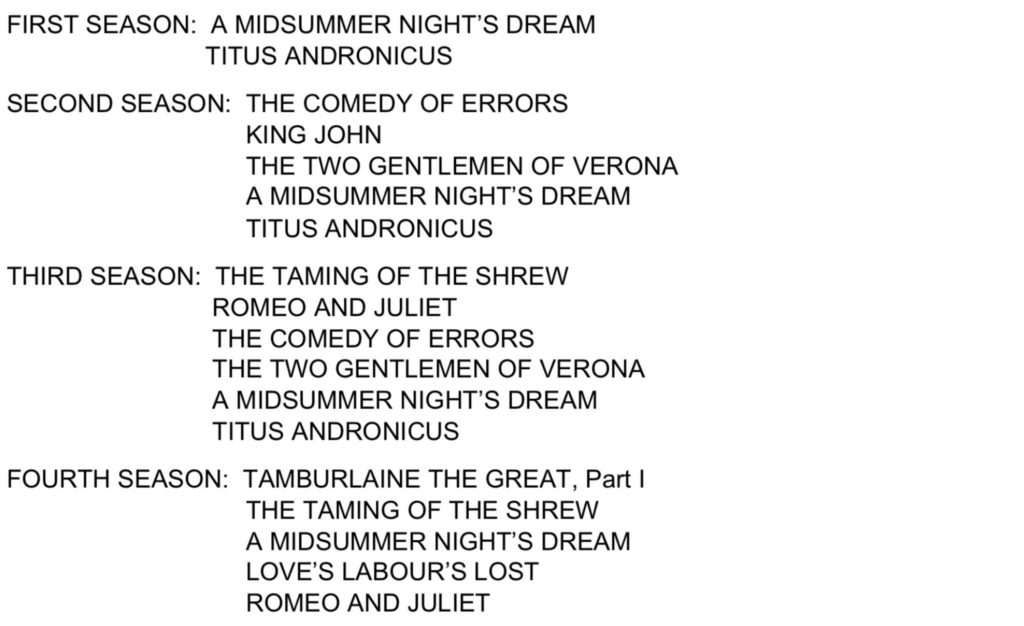
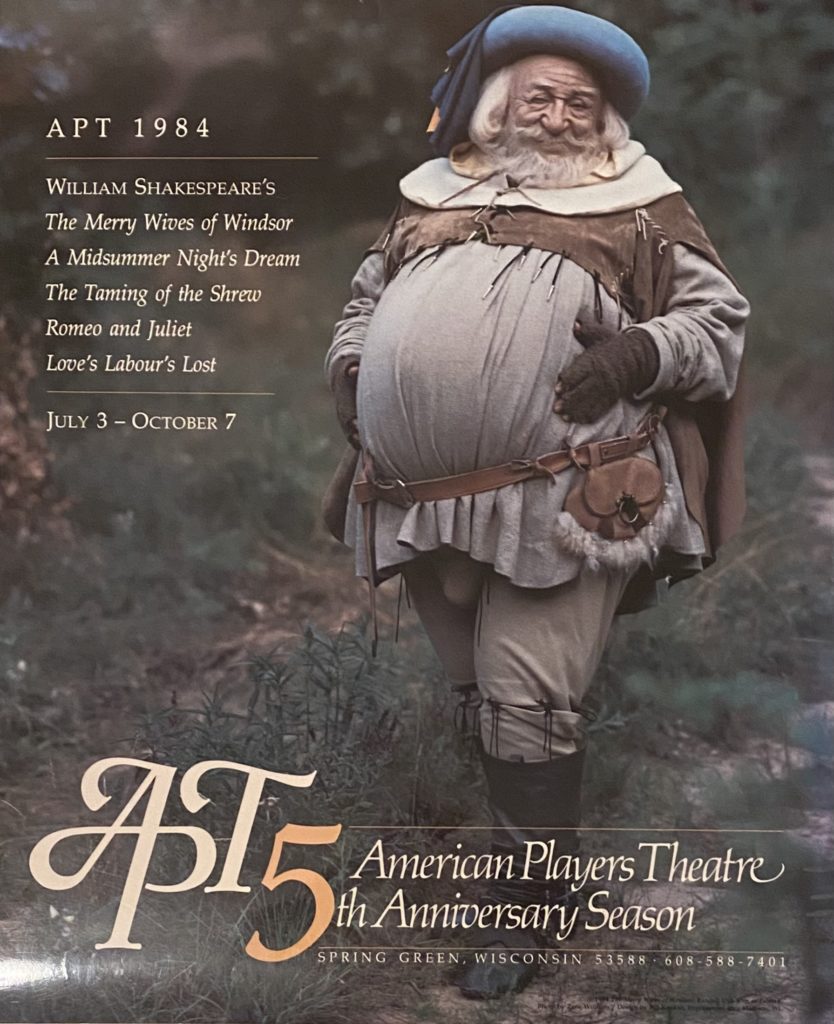
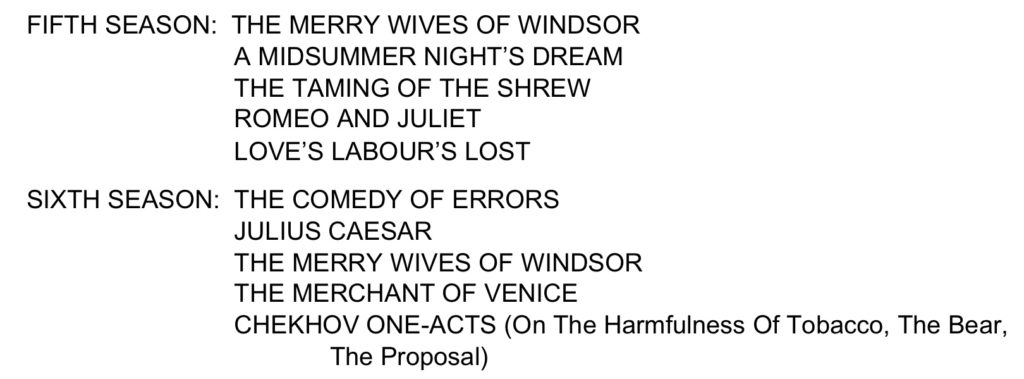
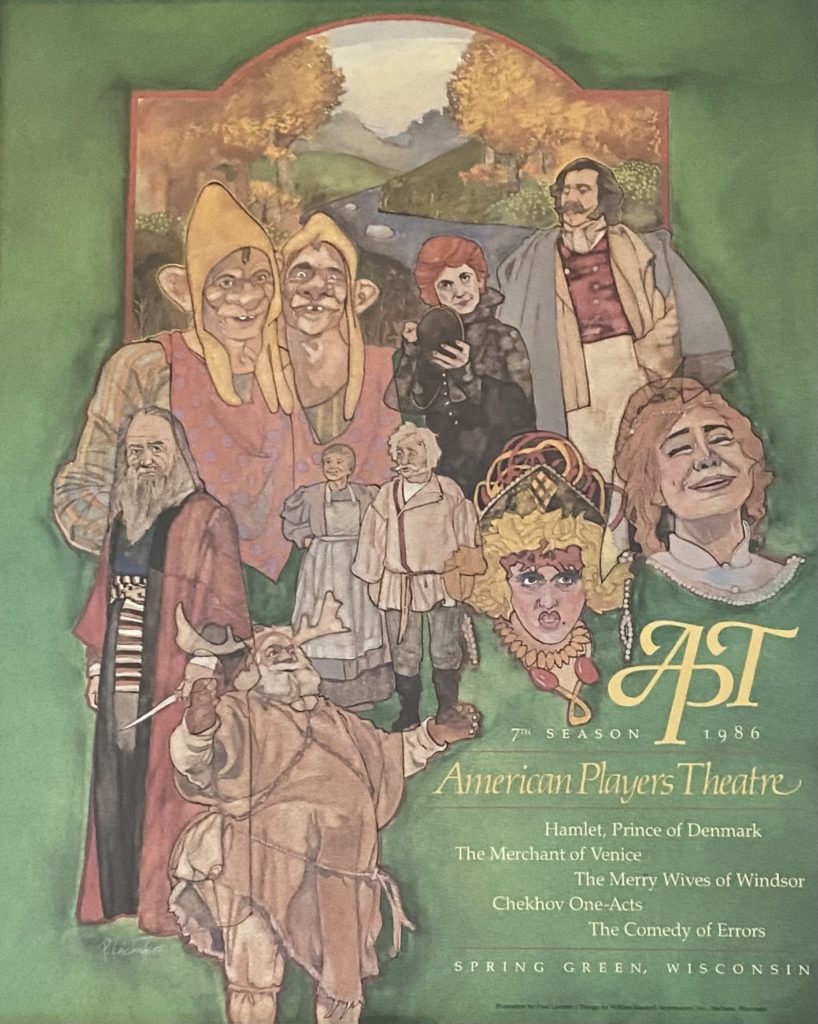

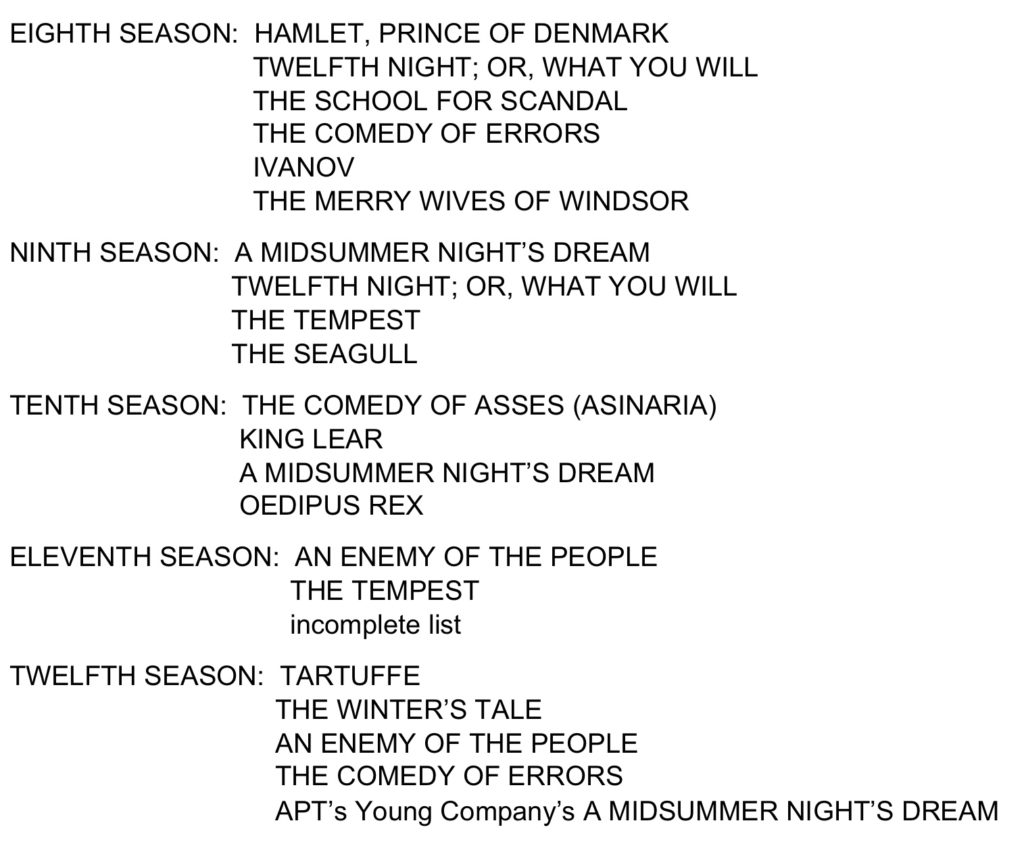
“I am writing this letter to thank you for the enormous gift you made to us—and to all the thousands of theatre goers whose lives you have enriched since you climbed that hill in Wisconsin and had the incredible energy and talent it took to make something great grow from your efforts. What a wonderful legacy. Our debt to you is beyond measure” – W.A. Morgan and Joy Ford, Audience Members
FINIS
Despite the invaluable contributions of artists and community members alike, after 12 years of intense struggle to realize our ideas, we were finally compelled to leave. There were certain obstacles that prevented us from achieving the high standards that we had set for this company. Nonetheless, the dream of an American, classical repertory theatre continues.
